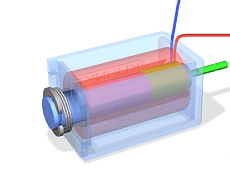
The goal of any race should be to make the race as fair as possible, which means removing as much of the "human" factor as possible. Using a solenoid activated starting gate will help ensure that the start gate is released the exact same way every time and is only activated when your computer operator and/or finish line judges are ready.
Commercially Available Start Gates
- New Directions - Offers several solenoid start gate models, depending on what type of track you are using. Remote and computer triggering requires the additional purchase of an accessory to accomplish.
- Micro Wizard - Offers a combined solenoid start gate and light tree unit that will work with their timers.
Do-It-Yourself Solenoid Start Gate
- Plans - Follow the link to a website that has simple plans for a solenoid activated starting gate. Most of the parts come from the corner Radio Shack.
- Solenoid Activation - Once you have your system built, you can activate the solenoid in a couple of different ways:
- Manual Switch - You can wire a switch so the solenoid can be activated manually. However, if you go through all the trouble to build this system, you might as well take it the next step and control it by software, but you may want to have a switch for testing purposes.
- Software - You can use your solenoid activated starting gate with the GrandPrix Race Manager software, as long as it is wired to a serial port connector on Pin 4 or Pin 7, with Pin 5 as the ground.
- Construction Notes
- Remove Capacitor C2 - It is possible to remove this capacitor, if you use the GrandPrix Race Manager software, since the software will keep the solenoid from immediately springing back (spring back type solenoids only). If you do not use this software, you may need C2, to keep the solenoid triggered long enough for the start gate to properly release.
- Finding a Solenoid - You may have difficulty finding a Solenoid, since Grainger doesn't seem to want to sell to the general public. An alternative is Part# 24F886 from Newark.
